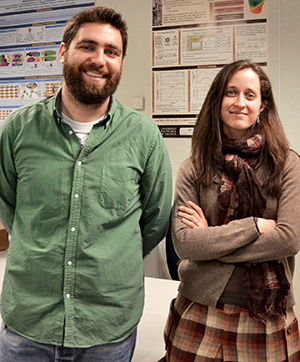Cardiological advance
UPV researchers have designed a catheter and a new method to facilitate diagnosis and treatment of patients with atrial fibrillation
[ 17/05/2016 ]
Researchers from the Universitat Politècnica de València (UPV), the Gregorio Marañón Hospital and the University of Michigan have designed a catheter and a method of analysis to facilitate diagnosis and therapy of patients with atrial fibrillation. Their work has been published online in the "Annals in Biomedical Engineering" journal.
The method provides doctors with accurate and detailed cardiac electrical activity information and helps direct the catheter to the optimal region where the treatment of the arrhythmia should performed. Thus facilitating intervention and reducing operation room time.
According to Miguel Rodrigo, predoctoral researcher at the ITACA Institute of the Universitat Politècnica de València, the main novelty of the work they have developed is that the cardiac electrical activity analysis is performed step by step and at a local level, although it provides a global analysis guided by the method itself. In each step, the electrophysiologist is provided with an analysis of the locally explored regions, which shows the region in which the catheter should be placed, avoiding a blind mapping of the entire atrium by the doctor.
"Thus, the diagnostic method we have developed provides a complete recording of all the activity on the atrial surface and of the existing propagation pattern during atrial fibrillation; all this is essential for the cardiologist to easily determine where perform the ablation", María Guillem points out, who is also a researcher at the ITACA Institute.
Simple method
The results obtained from the implementation of the method designed by Spanish and American researchers also stand out for its ease of use, unlike the methods currently used in clinical practice based on dominant frequency or fragmentation of the signal, whose effectiveness depends largely on the electrophysiologist using it.
By allowing an intuitive analysis of the propagation pattern, this facilitates the intervention by the cardiologist and navigating the catheter across the entire surface of the atrium is no longer necessary. This way, the operation room time required for the intervention is reduced. It is worth mentioning that, by offering an increased likelihood of successful results in interventions, the need for second interventions would also decrease.
In addition to its implementation in atrial fibrillation cases, the catheter and method developed by the researchers could also be applied to detect other arrhythmias and on behavioural analysis of the electrophysiological activity of muscle or nerve tissue.
Alongside the ITACA Institute, the Center for Arrhytmia Research of the University of Michigan (USA) and the cardiology service of the Gregorio Marañón Hospital have participated in its development.
Currently, the research team is already adapting their technology to incorporate it to the electroanatomic navigator of a commercial brand under a proof of concept project with licensing option.
About atrial fibrillation
Atrial fibrillation (AF) is the most common cardiac arrhythmia in clinical practice. It currently affects more than a million Spaniards over 40 years of age. Despite its high prevalence, identifying the most effective treatment for each case remains a challenge. In recent years, new invasive ablation techniques have been developed which require inserting intracardiac catheters in order to electrically isolate the arrhythmia-causing regions. However, this technique is not without complications and limitations, since the ablation therapy is not effective for a significant number of patients.
Noticias destacadas
 Acabar con la pobreza infantil en España aumentaría el PIB un 5'7%
Acabar con la pobreza infantil en España aumentaría el PIB un 5'7%
La pobreza infantil en España, a debate en unas jornadas organizadas por la Cátedra de Infancia y Adolescencia de la UPV, en Torrevieja
 QS rankings por materias
QS rankings por materias
La UPV, reconocida como mejor universidad de España para estudiar tanto Ingeniería Agroalimentaria y Forestal como Arte y Diseño
 La 'Escuela de Diseño' cambia de nombre
La 'Escuela de Diseño' cambia de nombre
La ETSIADI (Escuela Técnica Superior de Ingeniería Aeroespacial y Diseño Industrial) sustituye la denominación de ETSID
 La UPV, en la semifinal de Solo de Ciencia
La UPV, en la semifinal de Solo de Ciencia
Entre los diez semifinalistas, se encuentran Miguel López, investigador del CVBLab-Human Tech y Carolina Ropero, doctoranda en la UPV
 Primeros pasos del museo Ciència fallera de la UPV
Primeros pasos del museo Ciència fallera de la UPV
La UPV celebra el acto de entrega de premios del I concurso "La Ciència a les Falles". Los ninots ganadores, los primeros de este nuevo museo de la universidad
 UPV-CLÍNIC
UPV-CLÍNIC
La UPV e INCLIVA firman un convenio para impulsar conjuntamente la innovación en el ámbito de la salud







